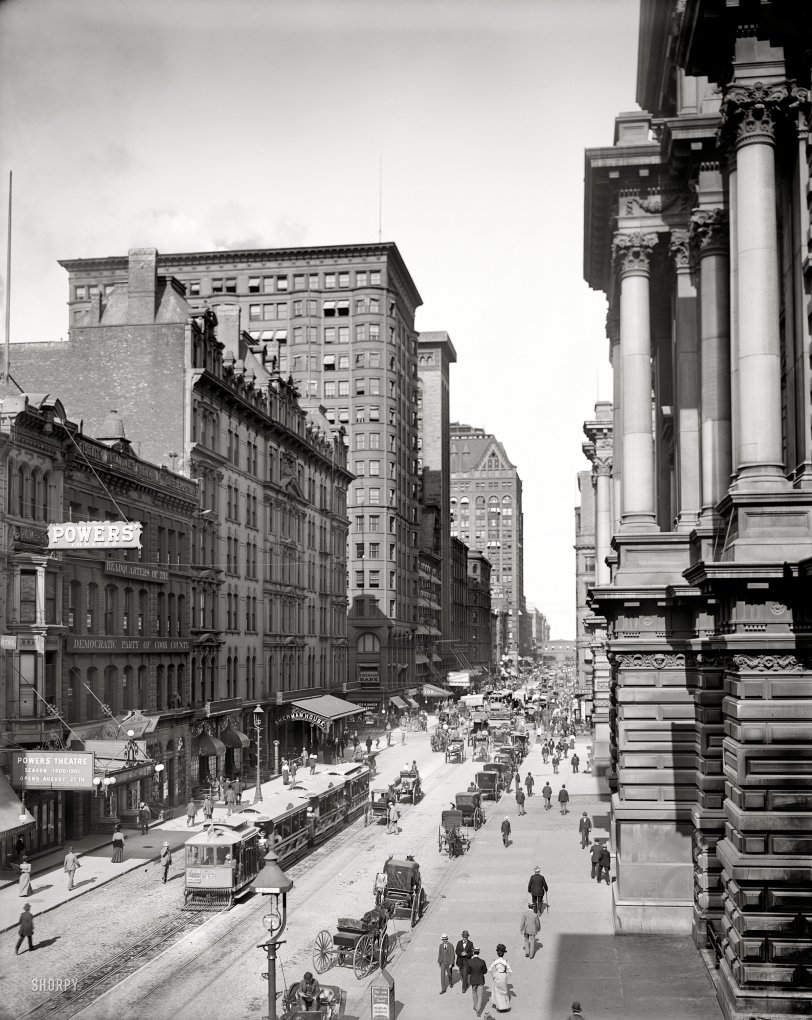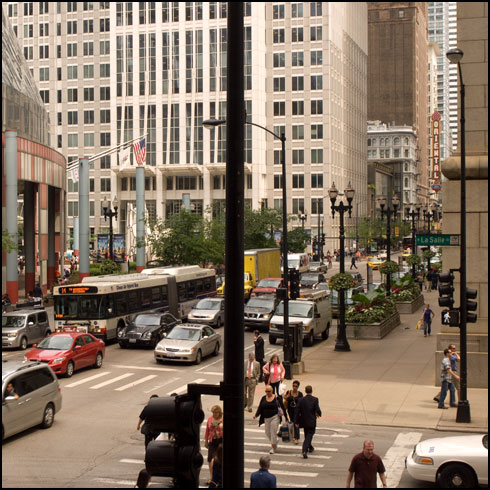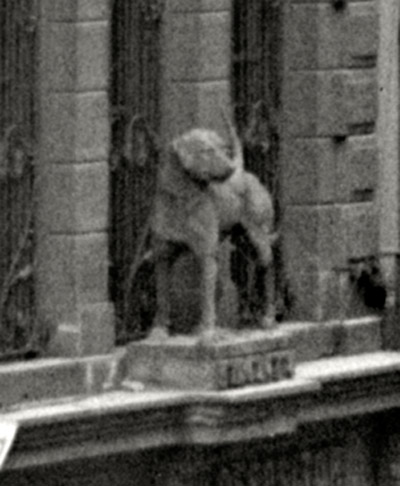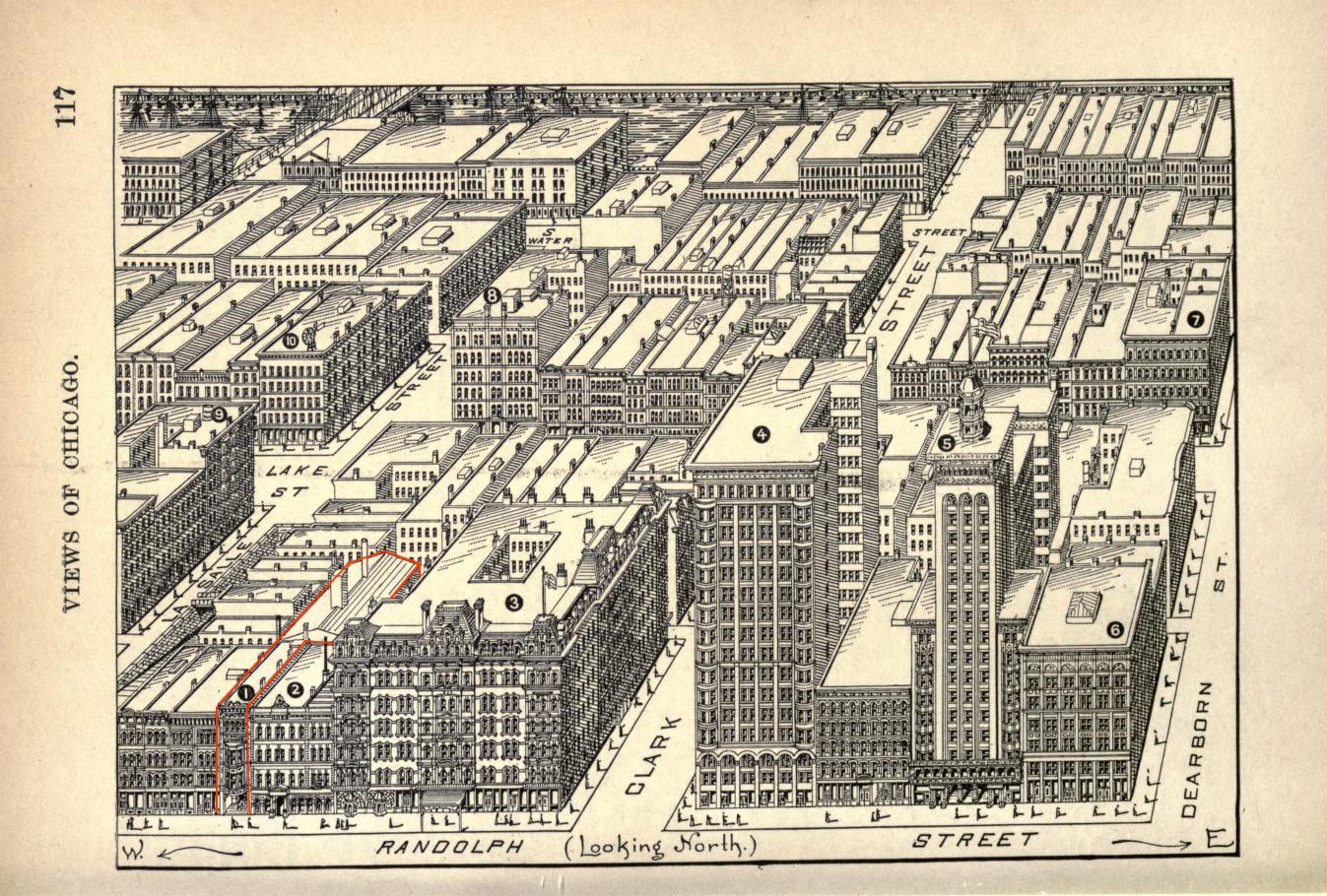


Framed or unframed, desk size to sofa size, printed by us in Arizona and Alabama since 2007. Explore now.
Shorpy is funded by you. Patreon contributors get an ad-free experience.
Learn more.

- Baldwin 62303
- Baldwin VO-1000
- Cold
- No expense spared
- Tough Guys
- Lost in Toyland
- And without gloves
- If I were a blindfolded time traveler
- Smoke Consumer Also Cooks
- Oh that stove!
- Possibly still there?
- What?!?
- $100 Reward
- Freeze Frame
- Texas Flyer wanted
- Just a Year Too Soon
- WWII -- Replacing men with women at the railroad crossing.
- Yes, Icing
- You kids drive me nuts!
- NOT An Easy Job
- I wonder
- Just add window boxes
- Icing Platform?
- Indiana Harbor Belt abides
- Freezing haze
- Corrections (for those who care)
- C&NW at Nelson
- Fallen Flags
- A dangerous job made worse
- Water Stop
Print Emporium
Randolph Street: 1900

September 1, 1900. "Randolph Street east from LaSalle, Chicago." 8x10 glass negative, Detroit Publishing Company. View full size.
Fidelity Fido
Fidelity and Fido both come the same root word in Latin, Fidus, meaning, approximately, I am faithful, trustworthy. Fido is a traditional name for a dog. Just a guess, but that's probably why a statue of Fido is on the, originally, Fidelity Savings Bank building. Trivia: Lincoln's dog was named Fido, it was left in Illinois when Lincoln went to Washington and they never again saw each other.
Randolph Street: 2011
August 12, 2011. Randolph Street east from LaSalle, Chicago.
As Michael R pointed out, the Delaware Building at Randolph & Dearborn is the only one remaining. In my photo it's the white one with the fancy windows.

Chicago's Cable Cars
The left hand track in the middle of Randolph Street is part of the cable car line operated by the North Chicago Street Railroad between 1888 and 1906. This line was built and run by Charles Tyson Yerkes, the much hated traction magnate of Philadelphia, Chicago, and London. The track on the right appears to be a remnant of horsecar service. The North Chicago cable car line, like the city's other two cable car companies, ran its trains around one-way loops through the downtown streets, which gave rise to the nickname of Chicago's central business district: the Loop. In 1900 Chicago had the largest cable car system in the country (bigger than San Francisco's), but there was no freight train service in the streets of downtown Chicago. The link to www.chicago-l.org in an earlier post refers to freight trains operated on the North Side L train right of way by the Chicago, Milwaukee & St. Paul RR (the Milwaukee Road) and the Chicago Rapid Transit Co. (later the Chicago Transit Authority) between 1907 and 1973.
Freight Railroad
The tracks to the right don't have overhead catenary because they're part of the freight service trackage that covered a large portion of Chicago at this time.
Fidelity, etc.
Presumably the lettering on the plinth under the dog says FIDELITY -- the building is the former Fidelity Savings Bank.
From "Rand, McNally & Co.'s bird's-eye views and guide to Chicago : indispensable to every visitor, containing inumerable details of business and residence localities, the most charming drives" (1893)
1. Hooley's Theater
Occupies a street frontage on Randolph of only 20 feet, but widens within, giving a stage 50 feet wide and 65 feet deep, the rear door being 180 feet from the entrance of the building, at 149 Randolph Street. This building has an exterior of cut-stone and iron, and is 4 stories and basement in height, with lodge-rooms on the upper floors. The theater seats 1,500 persons, but crowds them. The management is famous for presenting a line of first-class attractions, that command the admiration of all who patronize the drama. The best New York companies often play here. Erected in 1872.
2. The Fidelity Building
At 143-147 Randolph Street, stands just east, or lakeward, of Hooley's Theater, with 60 feet front, 60 feet of height, and 50 feet of depth, 4 stories and basement. It has a cut-stone exterior, and numerous safety vaults, visible from the street. This was once the home of the Fidelity Savings Bank, which failed in the hard times of 1877. The building is now occupied by steamship ticket agents, bankers and costumers. It was erected in 1872.
A Century Later
I'm reminded of Michael Crichton's speech in which he said that, had an average person in 1900 been asked "what do you think the biggest concerns will be in 2000?" they probably would have listed "what to do with all the dead horses" as near the top.
Woof
Look at the dog on the ledge under the "Democratic Party of Cook County" sign!

Jewelbox Building
Does anyone know anything about the lovely little building with the amazing windows that's to the right of the Democratic Party Headquarters? It would be right at home in 1900 Paris or Vienna, but Chicago?
How much is that doggie ON the window?
Is that a dog on that there ledge?
Dog Statue on 1st story ledge of Dem. Party Bldg
Now there's an interesting statue. Was the mascot a pooch instead of a donkey back in the day ?
Burnham and Root
Not sure, but I wonder if that's the Monadnock building designed by Burnham and Root in the center of the picture on the left side of the street.
A Row of Landmark Early Skyscrapers - All Gone
The tall buildings on the north (left) side of Randolph Street are, from left to right: 1) The Ashland Block, D. H. Burnham & Co., 1892-1893 (with "Hibernian Bank" sign in the window); 2) the Schiller Building (later Garrick Theatre), Adler & Sullivan, 1891-1892 (with "The Burgomaster" on the theatre marquee); and 3) the Masonic Temple, Burnham & Root, 1890-1892. The columniated building on the right side of the street is the old City Hall and County Building, replaced by the current building of the same name between 1905 and 1911. The only building still standing in this entire view is the diminutive 8-story Delaware Building, Wheelock & Thomas, 1872-1874 (the second building to the right of the Schiller Building). It now has a McDonald's on the lower two floors.
Lost World
None of these buildings are standing today. The building on the right lasted until the early part of the last century when it was replaced by the current Chicago city hall; the rest are all long gone.
Big Dog
I wonder what the reason is for the statue of the dog on the second floor of the Fidelity Bank Building ... was it placed there by the Democratic Party of Cook County?
Eternal Life in Chicago
The Cook County Democratic Party saw to it that you voted even if you were dead.
Along the Rope
That sure looks like a cable car train. The first, short car is a grip car, where the operator grabs or releases the cable down in the slot between the rails.
A grip car and three fully loaded trailers, as seen here, on crowded streets makes for a busy day for the grip man and his conductor.
The cable doesn't return on this street; note the opposite track is conventional two rail. With no trolley wire visible, I assume it is animal-powered.
I also can't find a hatless noggin in sight.
So much happening
Another great bustling city photo! Looks like this Saturday morning was a busy one.

























On Shorpy:
Today’s Top 5